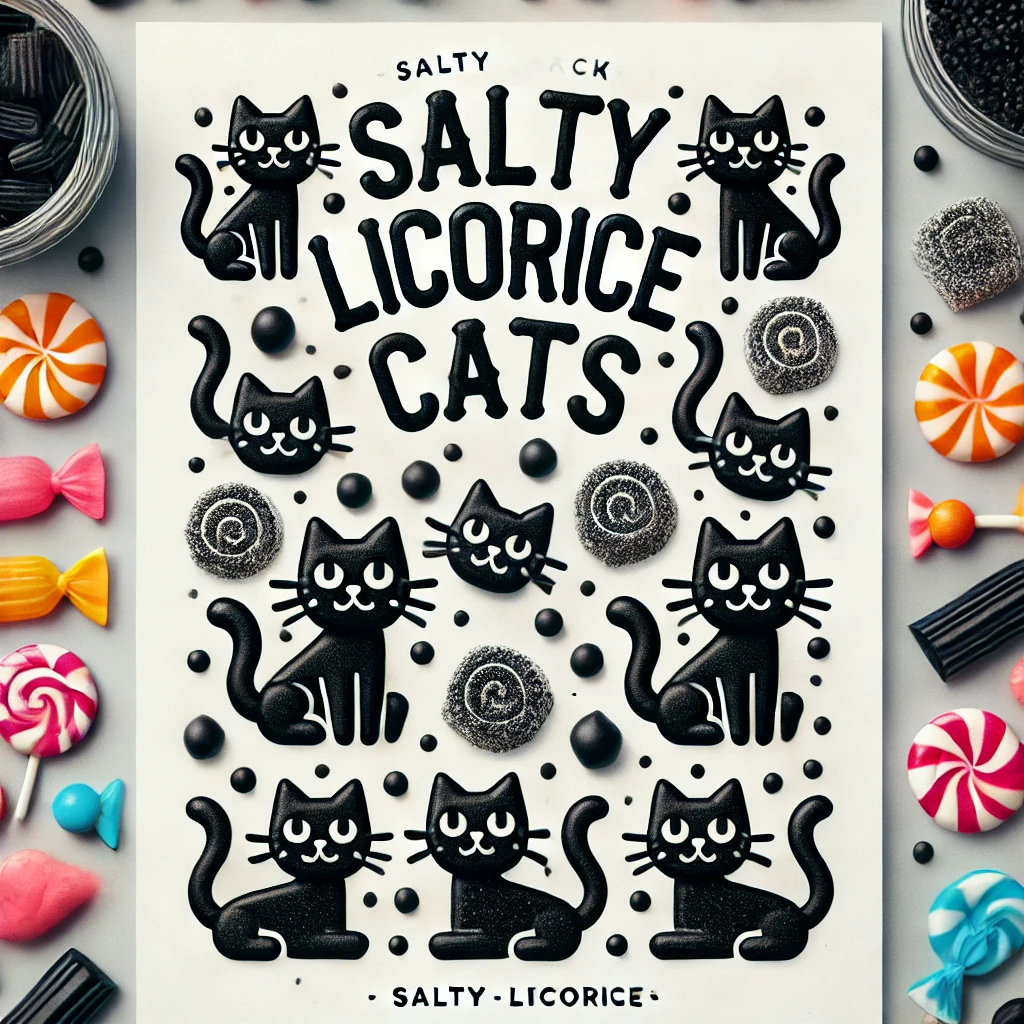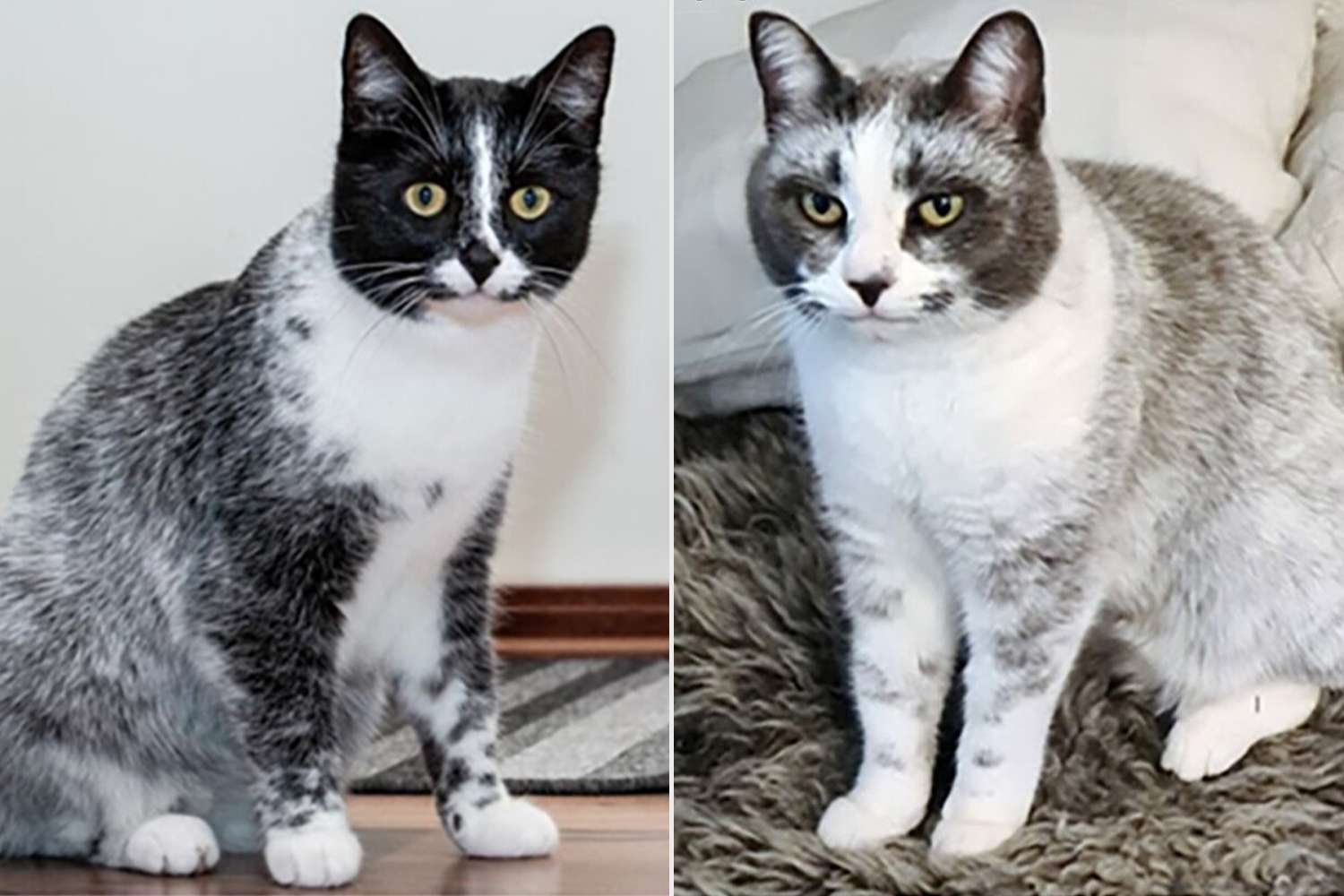When it comes to unusual treats, salty licorice takes the crown, especially among Nordic countries. However, adding a playful twist with the shape of cats? Now that’s something worth talking about! Salty licorice cats may sound odd to those unfamiliar with Nordic candies, but for enthusiasts, they are a nostalgic blend of quirky aesthetics and bold flavors. In this post, we’ll dive deep into the world of salty licorice cats, exploring their origins, ingredients, cultural significance, and why they’ve become a beloved icon in the confectionery world.
What is Salty Licorice?
Salty licorice, also known as salmiakki in Finland, is a unique type of candy made from ammonium chloride (NH₄Cl), giving it a distinctly salty taste. Unlike sweet licorice, which is common in many countries, salty licorice is a flavor that is cherished predominantly in northern Europe, particularly in countries like Finland, Sweden, Norway, Denmark, and the Netherlands.
The first-time experience with salty licorice can be quite polarizing—while some immediately fall in love with its briny punch, others are left baffled, wondering how something so salty could be considered a treat. Yet, for many in the Nordic regions, the flavor is an acquired taste tied closely to childhood memories and local traditions.
The Origins of Salty Licorice Cats
The exact origin of cat-shaped salty licorice is hard to pinpoint, but it is believed to be part of a broader trend within Scandinavian and Dutch candy manufacturing, where whimsical shapes are often used to attract children and create memorable products. Cats, in particular, symbolize both playfulness and mystery—qualities that align well with the allure of salty licorice.
The idea to mold licorice into playful cat shapes likely came as a way to make these candies more approachable, especially for children. Despite the intense flavor profile, the charm of the cat shapes adds a touch of whimsy, making it easier for kids and adults alike to indulge in this bold treat.
Ingredients Behind the Bold Flavor
Salty licorice is not just regular licorice with added salt. Its characteristic taste comes from:
Ammonium chloride: The key ingredient that delivers the salty, slightly medicinal flavor. It also provides the distinct numbing sensation some people experience.
Licorice root extract: Gives the candy its earthy, bittersweet undertone.
Molasses or sugar syrup: These help balance the intensity of the ammonium chloride and add subtle sweetness.
Wheat flour or starch: Used to give the candy its chewy texture.
Charcoal coloring: Many salty licorice candies, including cat-shaped ones, have a black or dark grey hue.
While these ingredients might sound unusual to those unfamiliar with salty licorice, they come together harmoniously to create a complex, addictive flavor.
Salty Licorice Cats and Nordic Culture

Salty licorice holds a special place in the hearts of Nordic people. It is more than just a treat—it’s a cultural phenomenon. You’ll find it sold at airports, convenience stores, and even pharmacies, as some believe it has mild medicinal properties for cough relief. Here’s how salty licorice is embedded in Nordic culture:
1. Childhood Nostalgia
Many Scandinavians grow up eating salty licorice, developing a fondness for it early on. Salty licorice cats, in particular, are often associated with childhood, as their fun shape makes them a hit among kids.
2. Social Bonding and Playful Dares
In some circles, offering salty licorice to someone unfamiliar with it is almost a tradition. Watching the unsuspecting individual’s reaction to the intense flavor often leads to laughter and bonding. The cat-shaped versions add an extra element of fun to this ritual.
3. Health and Wellness Myth
In addition to being a beloved snack, some people believe that salty licorice helps soothe sore throats and alleviate coughs. While not scientifically proven, the association between licorice and health persists, making it a common treat even during cold seasons.
Popular Brands and Where to Find Salty Licorice Cats
Many well-known Scandinavian and Dutch candy companies produce salty licorice cats, with subtle differences in flavor intensity and texture. Here are some of the most popular brands:
Haribo: Known for their wide variety of gummy candies, Haribo offers salty licorice cats with a more balanced, beginner-friendly flavor.
Läkerol: A Swedish brand that produces small, intensely flavored salty licorice pastilles, including cat-shaped varieties.
Heksehyl (Denmark): Known for its witch-themed licorice, this brand also produces cat-shaped candies as part of their product lineup.
Katjes (Germany): Although traditionally focused on sweet licorice, Katjes also offers salty versions, including their popular licorice cats.
You can find these candies in Scandinavian specialty stores, online shops, or even as souvenirs when visiting Nordic countries.
Why Are Salty Licorice Cats So Popular?
Despite its polarizing taste, salty licorice cats remain popular for several reasons:
1. A Taste of Tradition
For many Nordic residents, eating salty licorice is a way to connect with their cultural heritage. It’s a flavor that evokes nostalgia, reminding them of childhood treats and local customs.
2. The Element of Surprise
Introducing someone new to salty licorice is a playful way to engage in conversation. The unexpected punch of salt followed by licorice sweetness can be both amusing and memorable.
3. Health Associations
Even though the health benefits are debated, many people consume licorice when they have a sore throat or cold. This cultural association helps maintain the candy’s popularity.
4. Unique Flavor Appeal
For those who acquire a taste for it, salty licorice becomes addictive. The combination of bitterness, saltiness, and a hint of sweetness offers a complex taste experience that’s hard to find elsewhere.
How to Enjoy Salty Licorice Cats
If you’re new to salty licorice cat or looking to expand your palate, here are a few tips on how to enjoy these cat-shaped treats:
1. Start Slow
The flavor of salty licorice can be overwhelming at first. Start with a small piece to let your taste buds adjust.
2. Pair with Other Sweets
Mix salty licorice cats with sweeter candies, like fruit gummies or chocolate, to balance the flavors.
3. Try it with Coffee or Beer
In Nordic countries, it’s not uncommon to pair salty licorice with coffee or even certain beers. The bitterness of coffee complements the candy’s unique taste, while some beers have notes that harmonize with licorice.
4. Share with Friends
Half the fun of salty licorice is watching others experience it for the first time. Share these cat-shaped candies with friends for a good laugh and bonding experience.
Fun with fact
1. Cultural Icon: In Finland and Sweden, salty licorice is so popular that it has its own fan clubs and festivals!
2. Playful Packaging: Many salty licorice cat candies come in quirky packaging, with colorful cartoon cats on the label to appeal to kids and adults alike.
3. A Candy with History: Salty licorice has been around for centuries and was originally used as a medicinal remedy before becoming a popular treat.
4. Celebrity Endorsement: Some Nordic celebrities, like Finnish Formula 1 drivers, have openly expressed their love for salty licorice, further cementing its cultural significance.
The Controversy: Love It or Hate It?
Salty licorice cats, like all salty licorice, evoke strong reactions. Some people are instantly hooked, while others can’t fathom how anyone could enjoy such an unusual flavor. This divide has led to heated debates online, with food forums filled with passionate opinions from both sides.
However, this controversy only adds to the allure of salty licorice. It’s not just a candy—it’s a conversation starter, a cultural touchstone, and, for many, a badge of honor to say they enjoy it.
Conclusion: A Candy Worth Trying
Salty licorice cats may not be everyone’s cup of tea, but they offer a fascinating glimpse into Nordic culture and cuisine. Their playful shape, combined with a bold and briny flavor, makes them a memorable treat—whether you love them or not. If you’re curious about expanding your candy palate or want to experience a piece of Scandinavian tradition, give salty licorice cats a try. Who knows? You might just find yourself reaching for another piece, or at the very least, you’ll have a fun story to tell about your encounter with this quirky, iconic candy.
FAQs
1. What makes salty licorice different from regular licorice?
Salty licorice contains ammonium chloride, which gives it a salty, medicinal flavor that is quite distinct from the sweetness of regular licorice.
2. Are salty licorice cats popular outside of Nordic countries?
While not as common outside the Nordic region, salty licorice has developed a cult following among adventurous food enthusiasts worldwide.
3. Is salty licorice good for health?
There is no scientific evidence to support the health benefits of salty licorice, though

